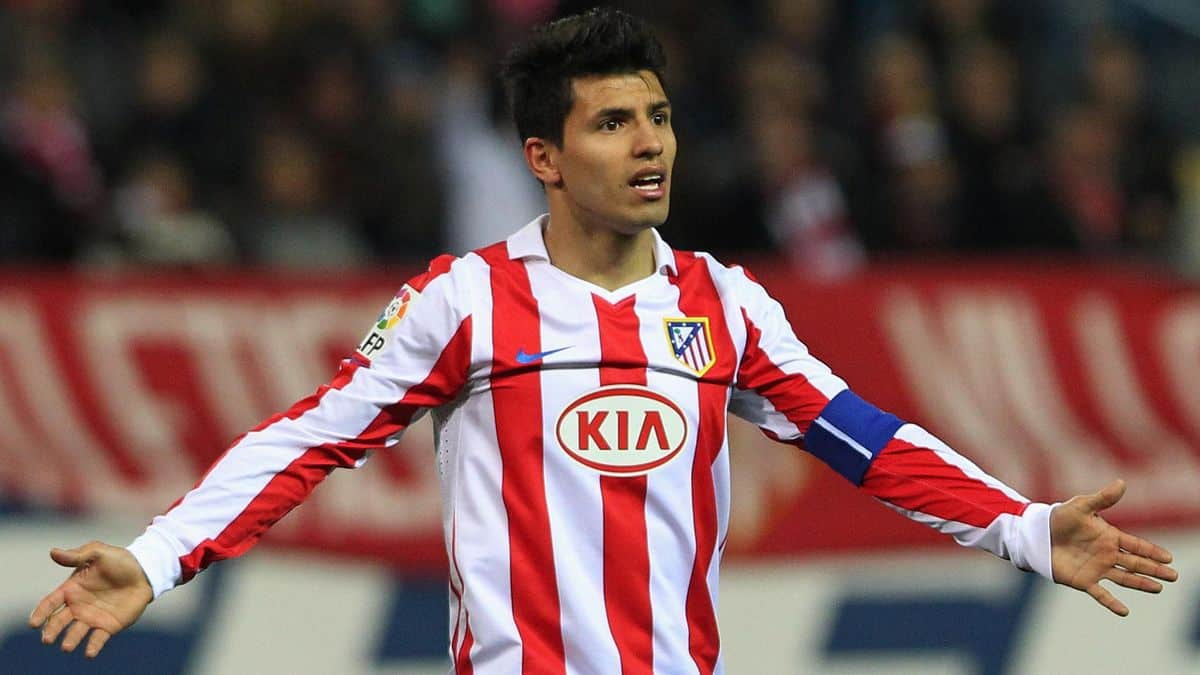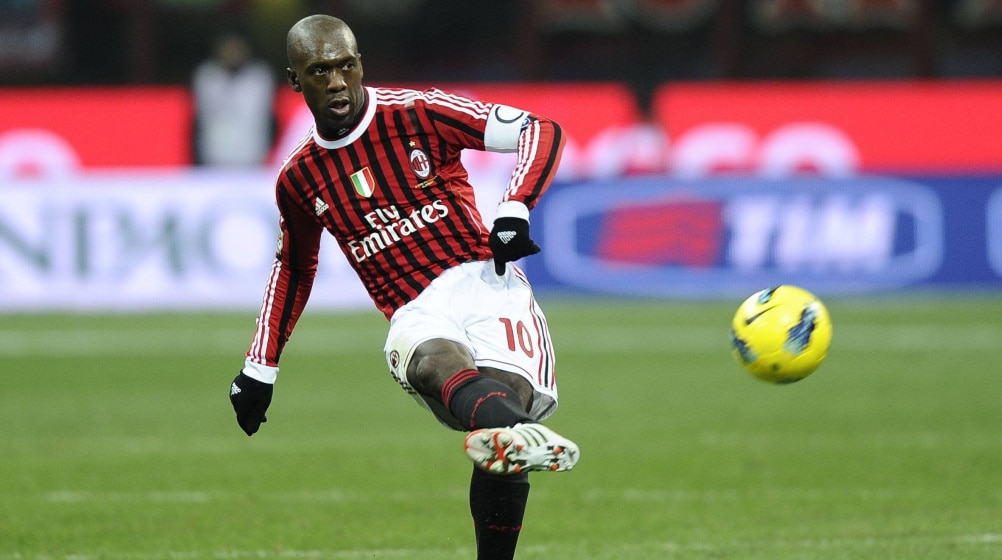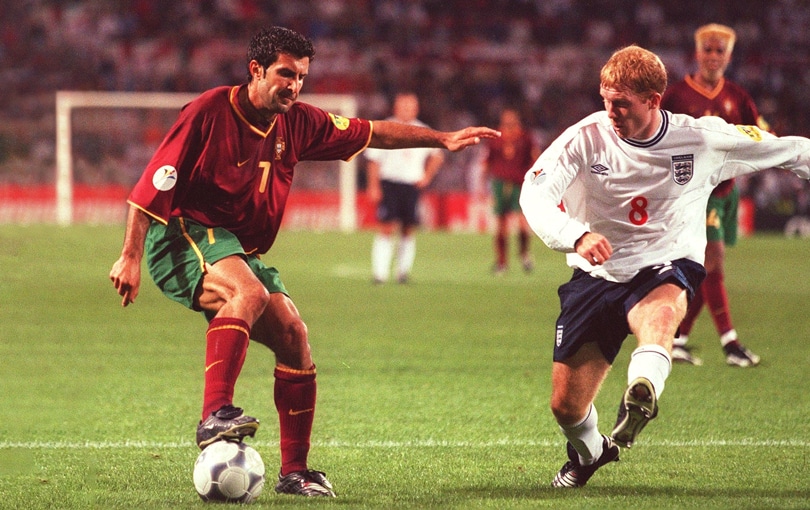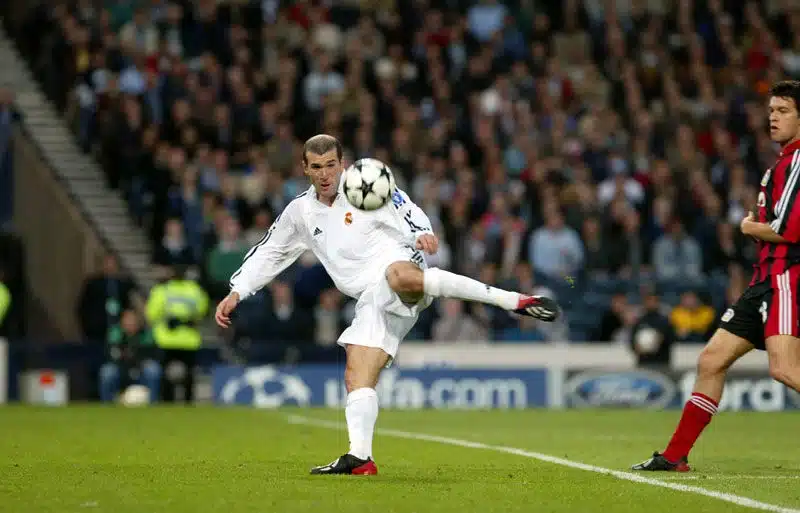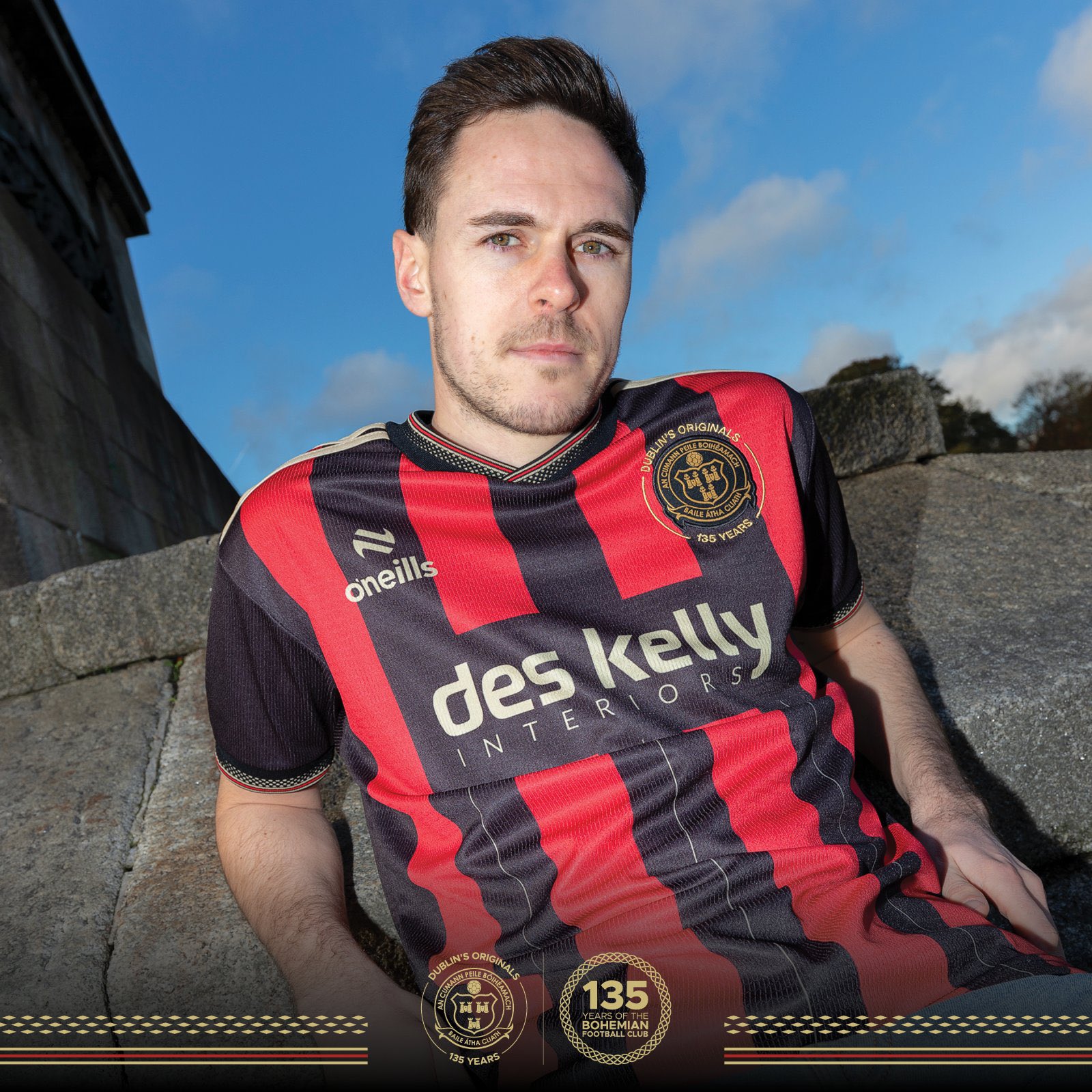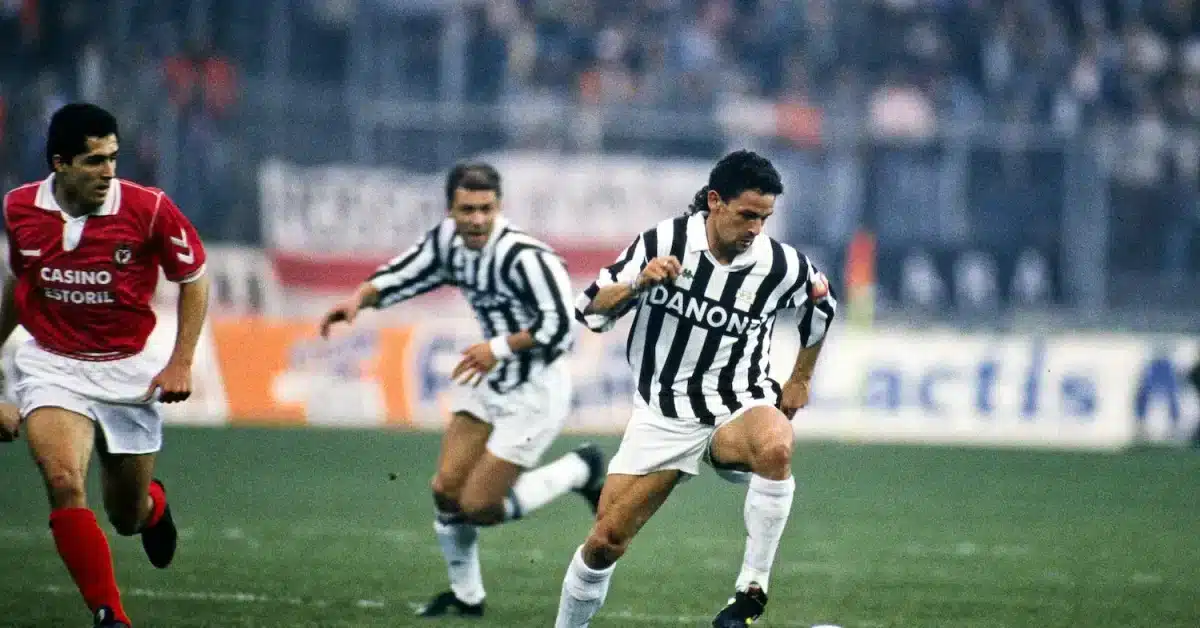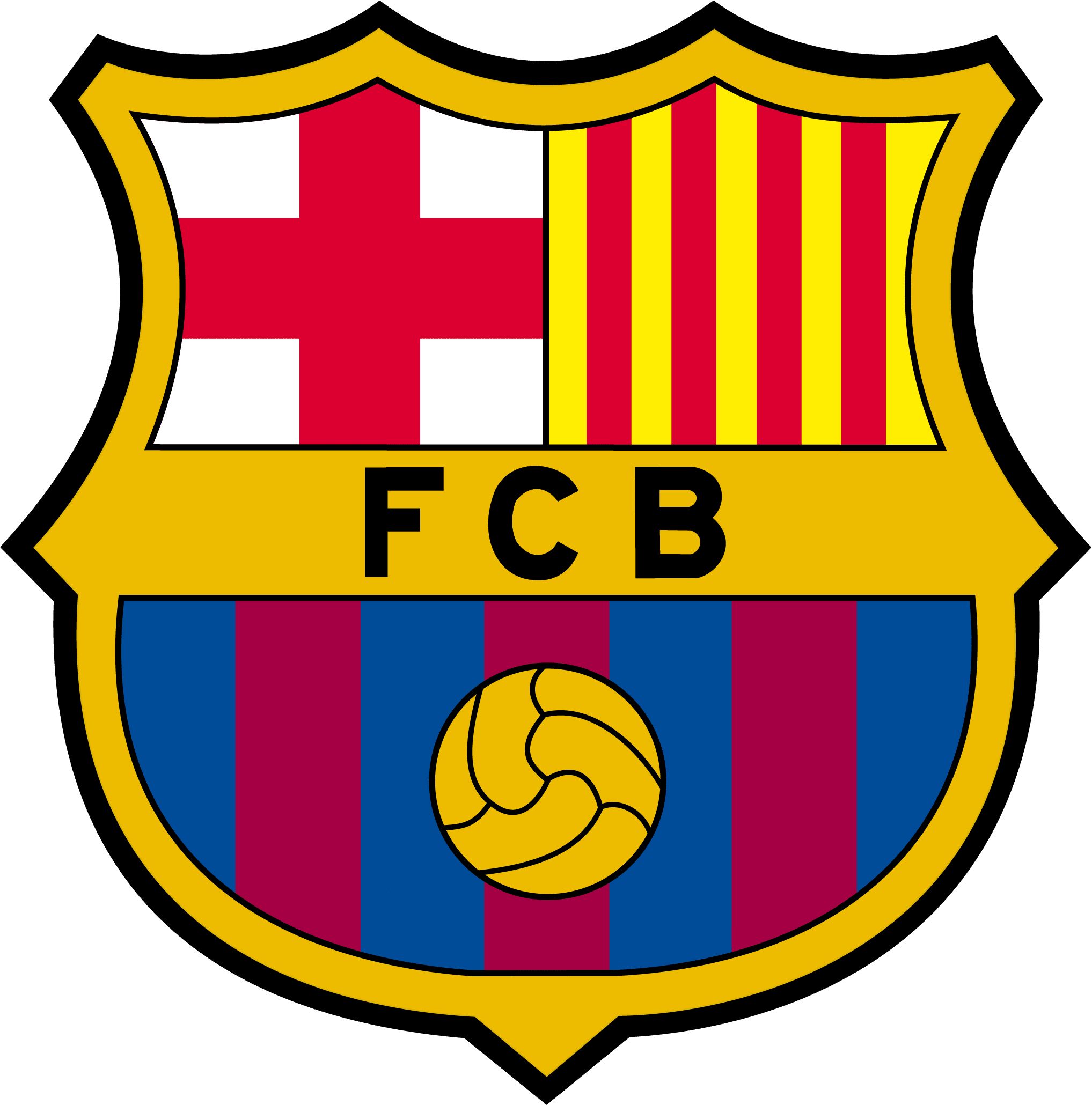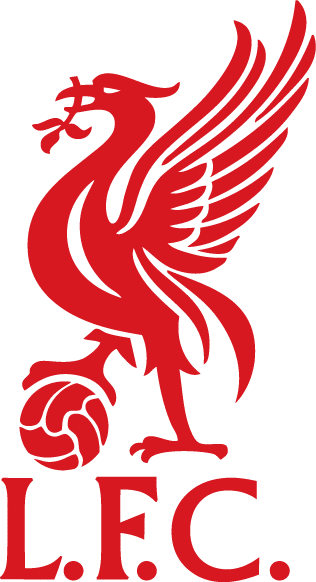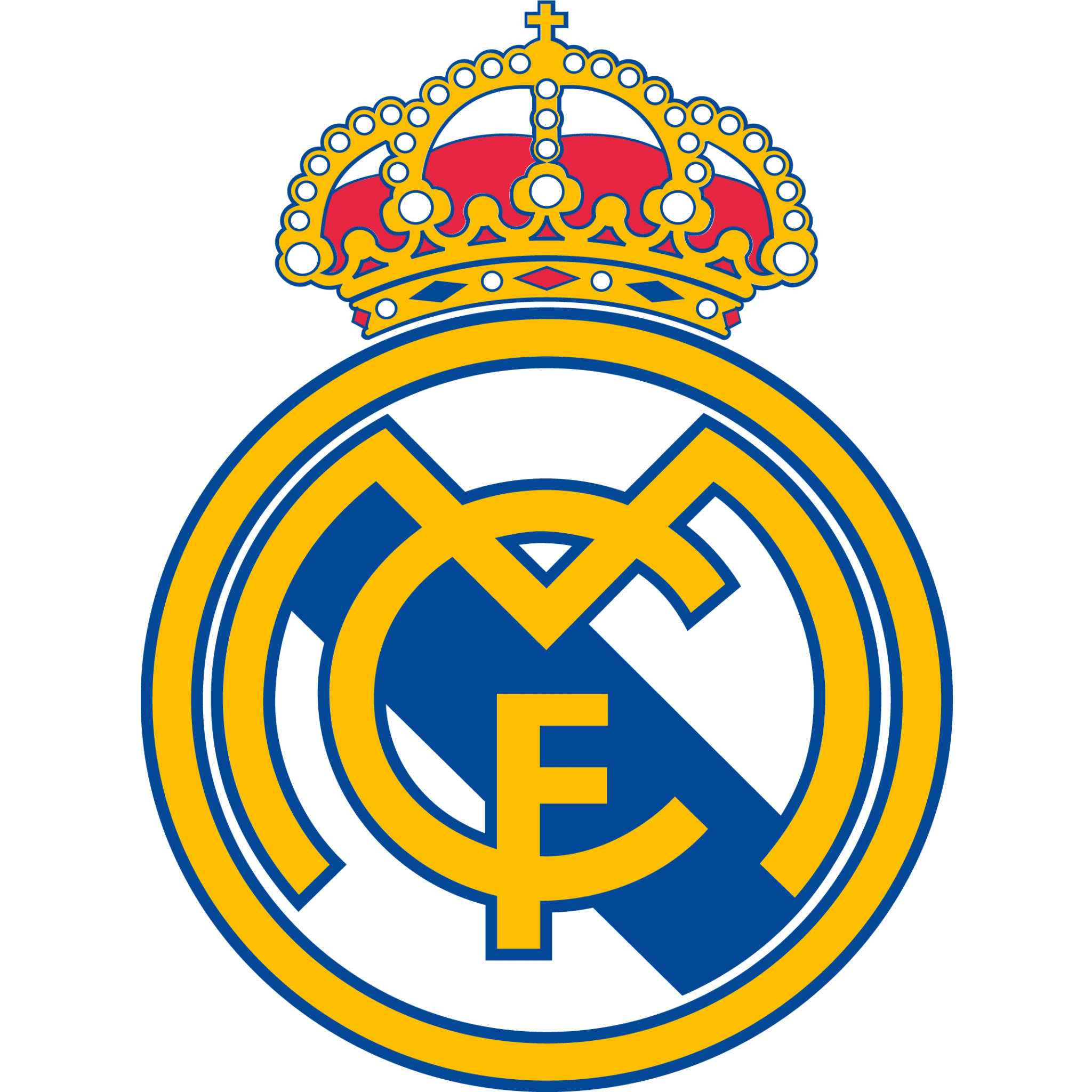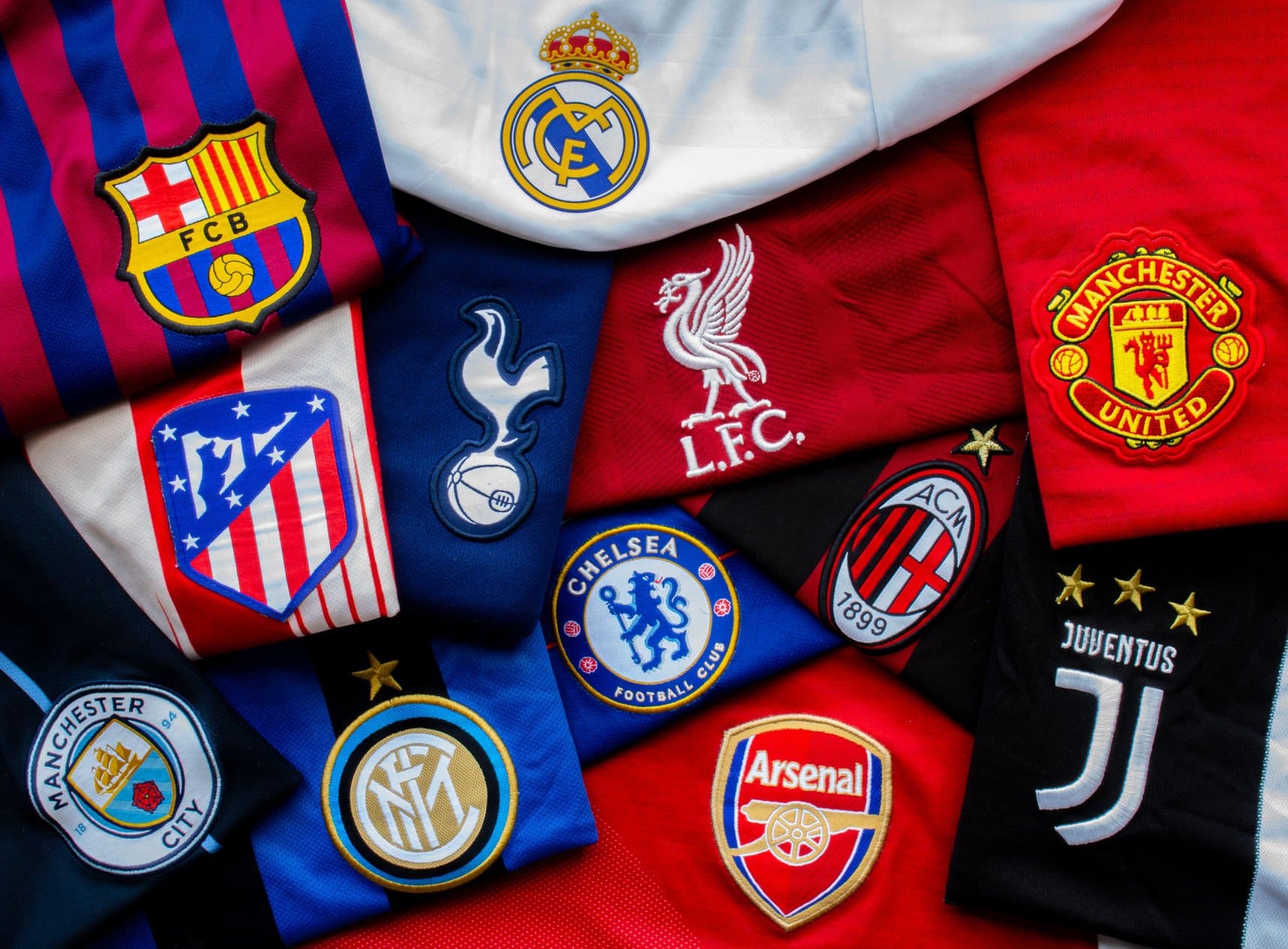Roberto Baggio was born on February 18, 1967. He is a legendary figure in Italian football, celebrated for his exceptional skills as a second striker and attacking midfielder. Renowned for his technical prowess, creative playmaking, and remarkable set-piece ability, Baggio has earned his place among the greatest players in the history of the sport. His illustrious career includes a notable tenure as the president of the technical sector of the Italian Football Federation. With accolades such as the FIFA World Player of the Year in 1993 and a spot on the FIFA World Cup Dream Team in 2002, Baggio’s impact on the game is undeniable. He represented Italy in 56 matches, scoring 27 goals and leaving an indelible mark on World Cup history, notably leading the Azzurri to the final in 1994. Known affectionately as “Il Divin Codino” for his iconic ponytail, Baggio’s legacy extends beyond the pitch, reflecting his humanitarian efforts and spiritual beliefs, making him a revered figure both in sports and society.
Vicenza: 1982-1985
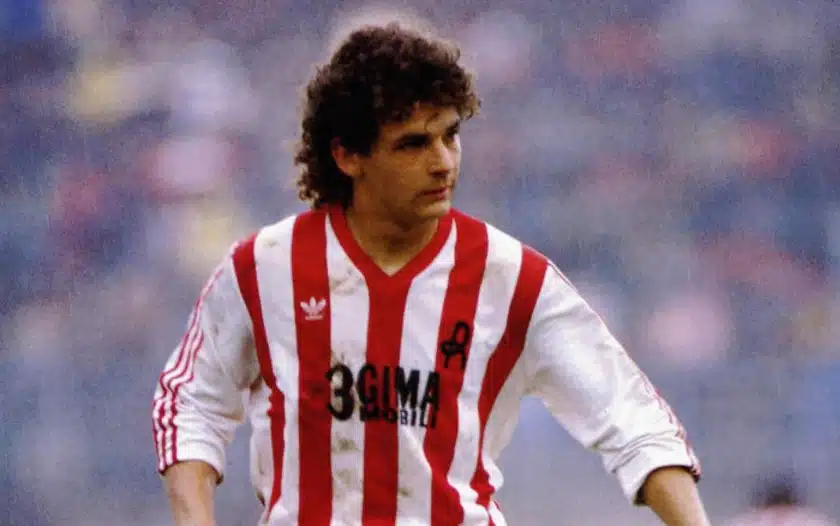
Roberto Baggio began his football journey with Vicenza, joining their youth team at just 13 after impressing scouts with his remarkable goal-scoring ability. By age 15, he made his professional debut in Serie C1, becoming a substitute in a match against Piacenza. Baggio quickly made his mark, scoring his first goal from a penalty in a win over Brescia. During the 1984–85 season, he netted 12 goals, helping Vicenza gain promotion to Serie B and earning the Guerin d’Oro as the league’s best player. Unfortunately, a severe knee injury just before his transfer to Fiorentina threatened his promising career, but the club’s faith in him remained unwavering.
Fiorentina: 1985-1990
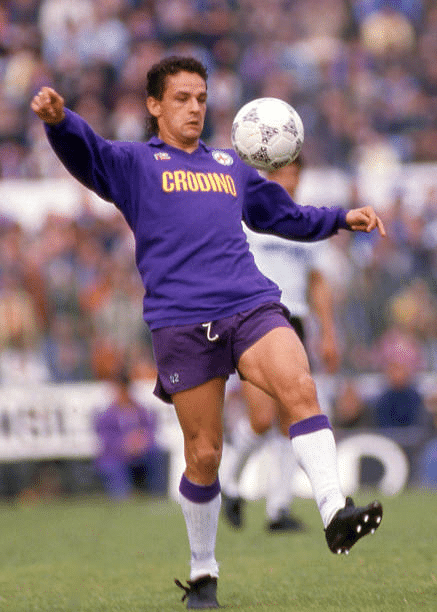
Fiorentina in 1985 was the next destination for Roberto Baggiom signing for £1.5 million, marking the beginning of a transformative chapter in his career. Initially hindered by injuries, he struggled to make an impact in his first season, but his talent quickly shone through. Baggio made his Serie A debut on September 21, 1986, in a 2–0 victory against Sampdoria and made his European debut shortly after. Despite another knee injury that required extensive surgery, he persevered, scoring his first league goal from a free-kick in May 1987, crucially saving Fiorentina from relegation.
Under manager Sven-Göran Eriksson, Baggio’s breakthrough season came in 1988–89, where he netted 15 goals, helping the team secure a UEFA Cup spot. His partnership with Stefano Borgonovo, dubbed “B2,” was instrumental, as they combined for 29 of the team’s 44 Serie A goals. Baggio’s performances earned him hero status among fans, with pundits praising his composure and skill, even comparing him favourably to Diego Maradona.
In the 1989–90 season, Baggio led Fiorentina to the UEFA Cup Final, scoring crucial goals along the way. By the end of his time at the club, he had amassed 55 goals in 136 appearances, solidifying his legacy as one of Fiorentina’s all-time greats.
Juventus: 1990-1995
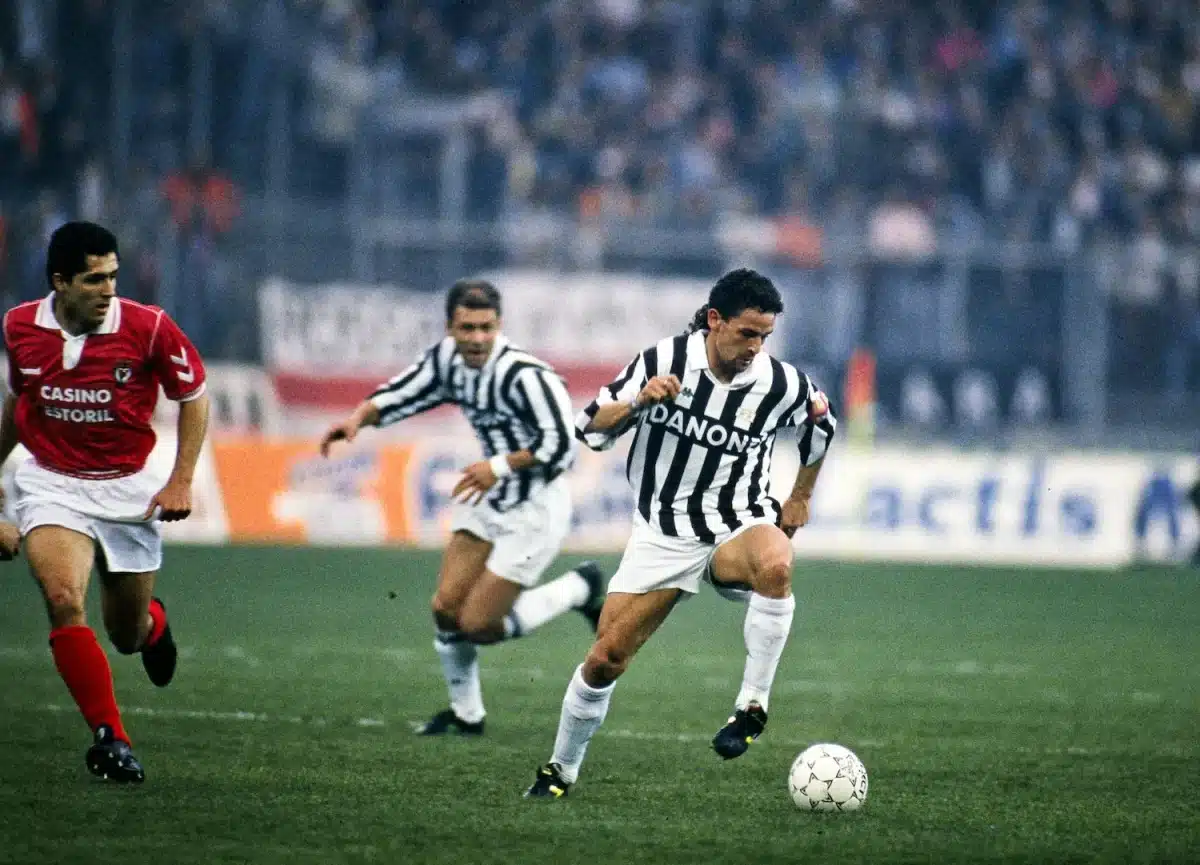
In 1990, Roberto Baggio made headlines when he transferred from Fiorentina to Juventus for £8 million, a world record at the time. This move sparked riots in Florence, highlighting the intense rivalry between the clubs. Baggio inherited the iconic number 10 shirt, previously worn by Michel Platini, and despite initial resistance from Juventus fans, he expressed his enduring affection for Fiorentina, claiming he would always be “purple” at heart.
During his first season, Baggio scored 14 goals and provided 12 assists, though Juventus finished seventh in Serie A. He was the top scorer in the European Cup Winners’ Cup, netting nine goals, but the team was eliminated by Barcelona. His second season under Giovanni Trapattoni saw him finish as runner-up to Marco van Basten in the Serie A scoring charts with 18 goals, helping Juventus secure a second-place finish.
Baggio’s leadership grew, and he was named team captain for the 1992–93 season, leading Juventus to the UEFA Cup title, where he scored twice in the final. Over five seasons, Baggio scored 115 goals in 200 appearances, becoming one of Juventus’s all-time greats and solidifying his legacy in Italian football.
AC Milan: 1995-1997
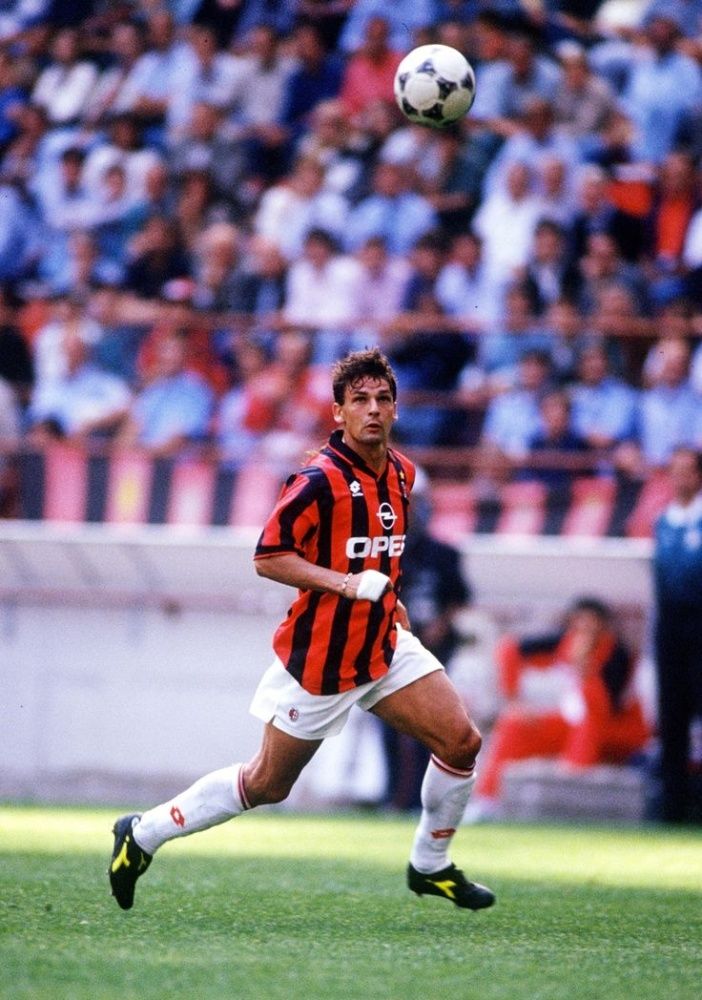
In 1995, Roberto Baggio transferred to AC Milan for £6.8 million after being sidelined at Juventus, where he faced contract disputes and management issues. Initially struggling with injuries, he eventually became a key player, scoring ten goals and providing 12 assists in his first season, helping Milan secure the Serie A title. Baggio notably scored a penalty against Fiorentina in the title-deciding match, earning fan recognition as the club’s best player.
However, under new manager Óscar Tabárez, he faced challenges, often being benched. Despite these struggles, Baggio scored 19 goals in 67 appearances during his time at Milan, showcasing his enduring talent.
Bologna 1997-1998
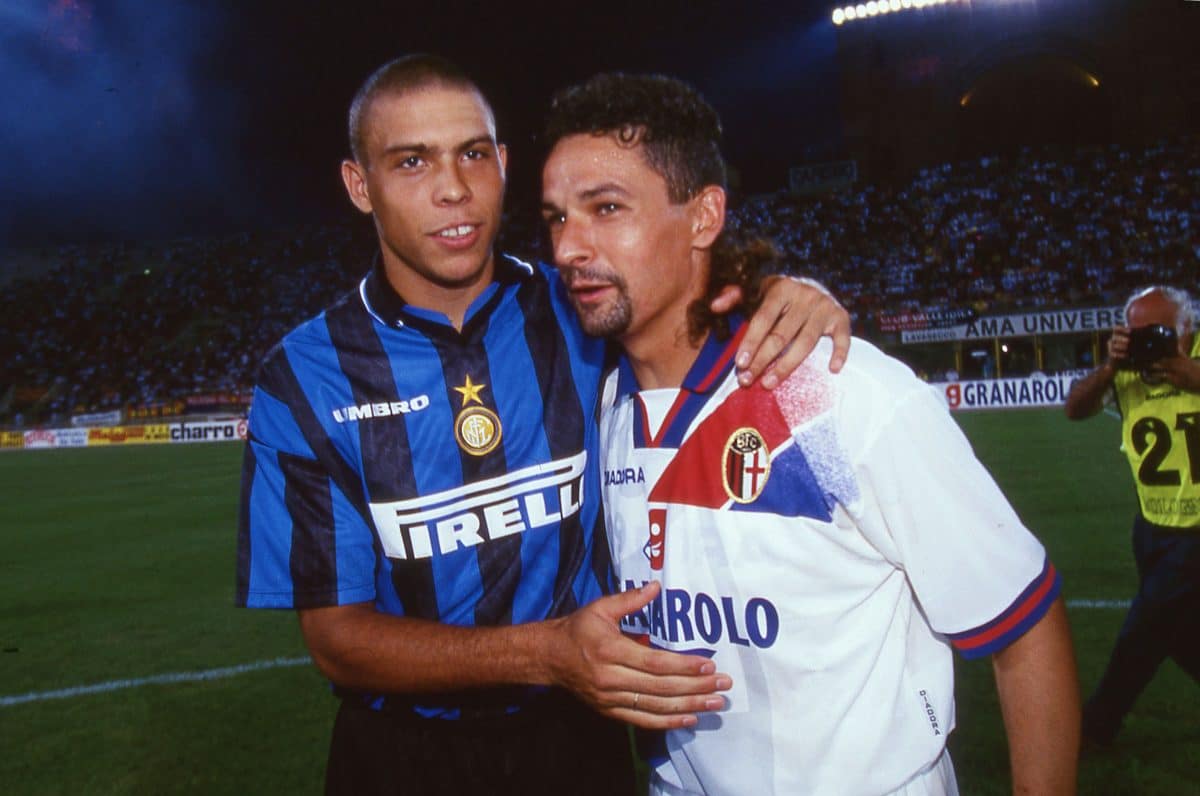
In 1997, after being deemed surplus to requirements at AC Milan, Roberto Baggio joined Bologna, seeking to revive his career and secure a spot in Italy’s 1998 World Cup squad. He thrived at Bologna, scoring a personal best of 22 goals in Serie A and providing nine assists, making him the highest-scoring Italian that season. His remarkable performances led Bologna to an eighth-place finish and qualification for the UEFA Intertoto Cup. Despite some tensions with manager Renzo Ulivieri, Baggio became a fan favourite and was named captain for part of the season. His success earned him nominations for the Ballon d’Or and FIFA World Player of the Year.
Inter Milan 1998-2000
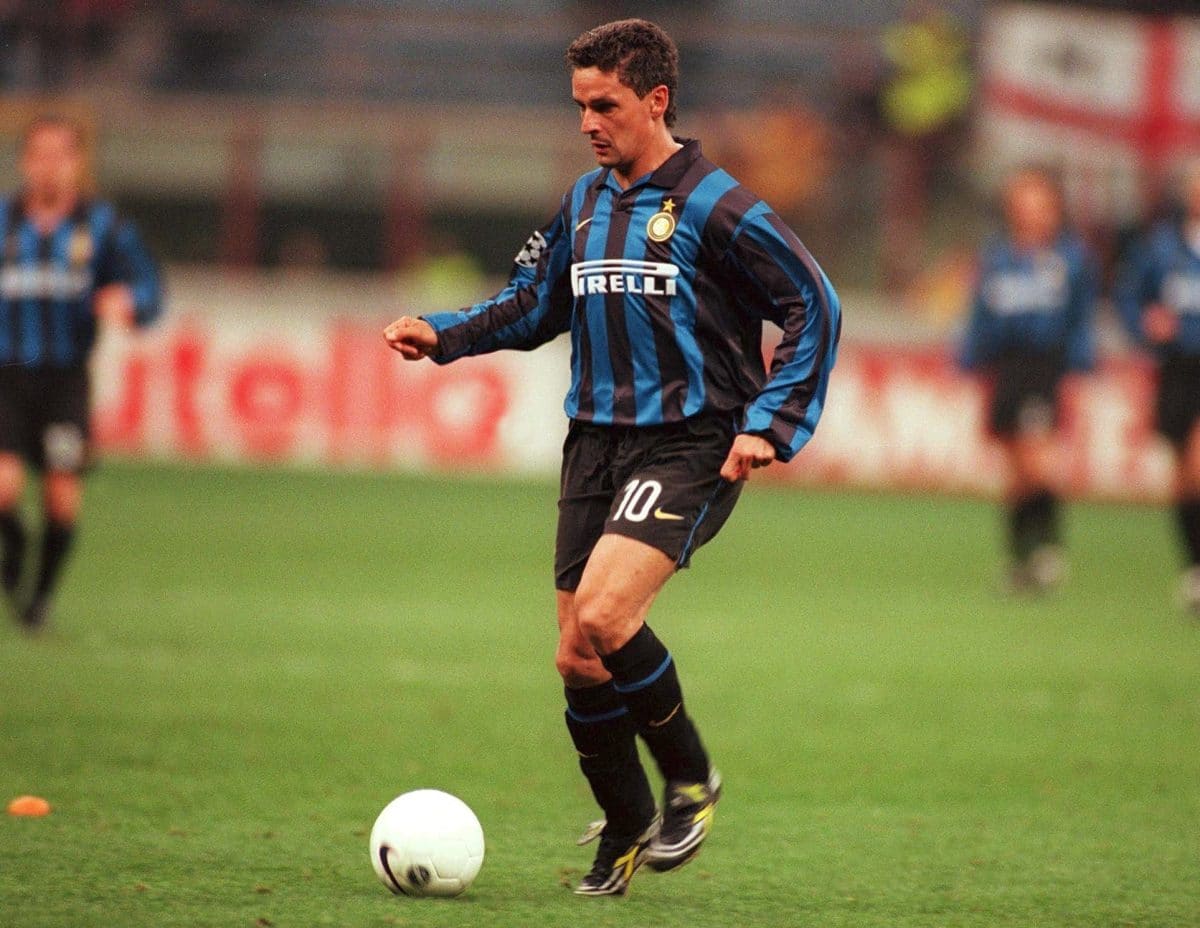
Roberto Baggio joined Inter Milan in 1998, fulfilling a childhood dream and aiming to compete in the UEFA Champions League. His debut was impressive, scoring and assisting in a 4-0 victory over Skonto FC. However, his time at Inter was marred by injuries, managerial changes, and limited playing time, often being used as a winger or substitute. Despite these challenges, Baggio scored five league goals and made crucial contributions in cup competitions, including a memorable brace against Real Madrid. In his final season, he showcased his talent by leading Inter to a Champions League playoff victory over Parma, leaving a lasting legacy.
Brescia: 2000-2004
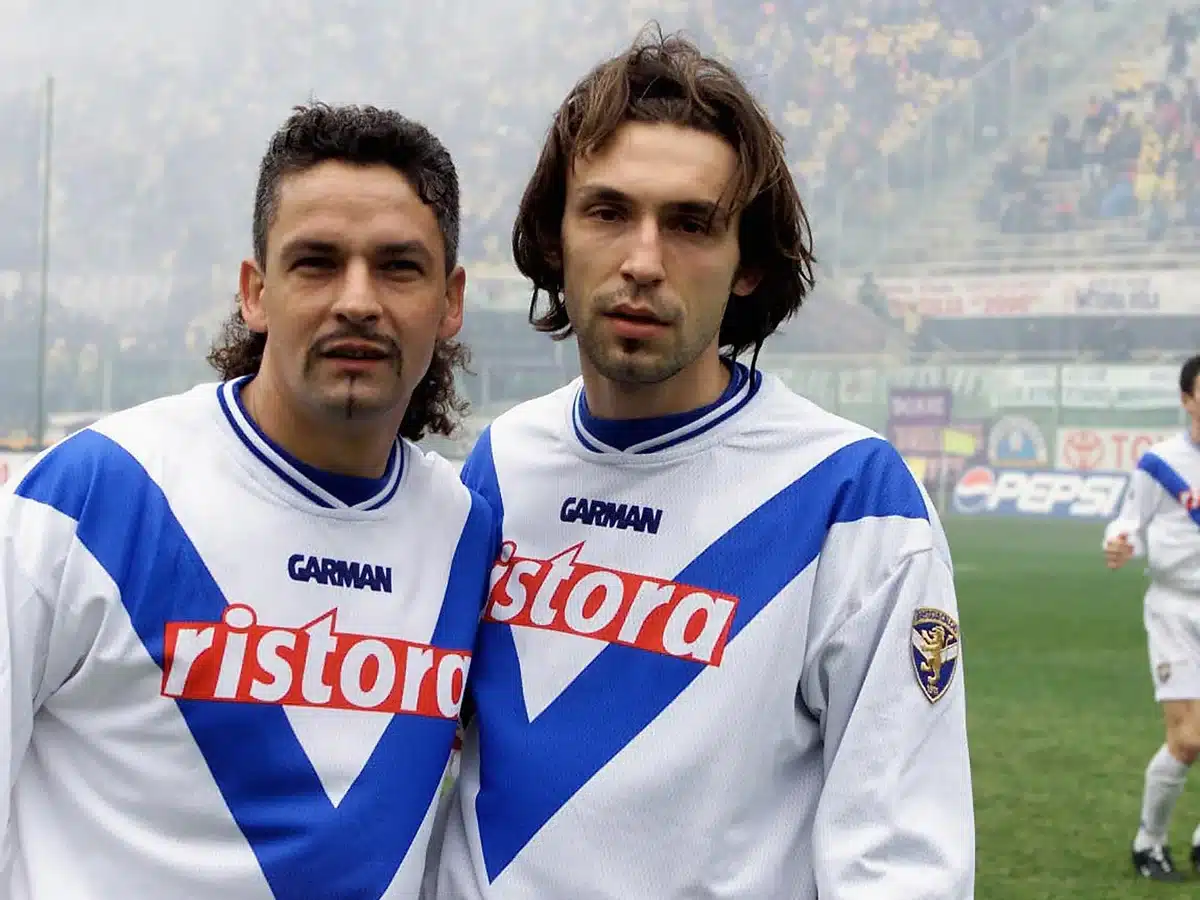
After leaving Inter Milan due to conflicts with Marcello Lippi, Roberto Baggio signed with Brescia in 2000, where he aimed to revitalise his career and help the newly promoted club avoid relegation. Given the captaincy and the iconic number 10 shirt, he played as an attacking midfielder. Despite initial injury struggles, Baggio quickly found form, netting ten goals and providing ten assists in his first season. Brescia finished an impressive seventh in Serie A, their best showing since the league’s re-establishment, and reached the quarter-finals of the Coppa Italia.
In the 2001–02 season, Baggio started strong, leading the goalscoring charts until injuries sidelined him. Nevertheless, he made a triumphant return, scoring crucial goals to help Brescia avoid relegation. He continued to impress, achieving 12 goals and 9 assists in the 2002–03 season, and celebrated his 300th career goal while guiding the team to another solid finish.
Baggio’s final season in 2003–04 was marked by 12 goals, including his 200th Serie A goal, solidifying his legacy. He retired as Brescia’s all-time leading goalscorer, and the club honoured him by retiring his number 10 shirt, cementing his status as their greatest player.
Italy: 1988-2004
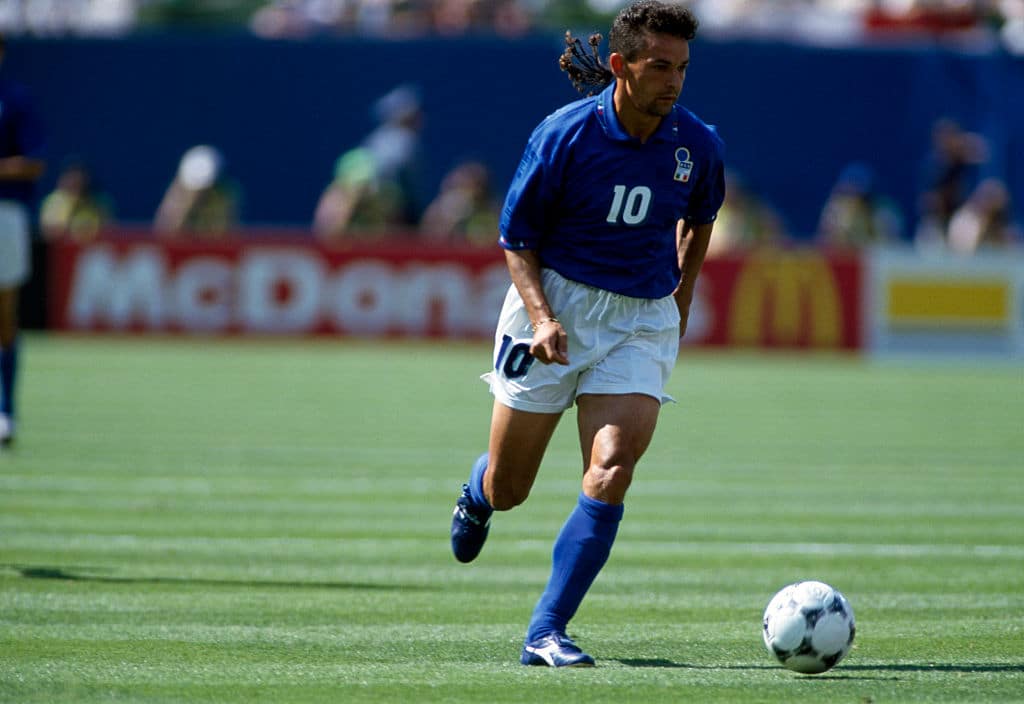
Roberto Baggio’s international career with the Italian national team was marked by brilliance and heartbreak. He debuted on November 16, 1988, at just 21 years old, quickly establishing himself as a key player. Baggio scored 27 goals in 56 caps, making him one of Italy’s top scorers alongside Alessandro Del Piero.
His first major tournament was the 1990 FIFA World Cup, held in Italy, where he scored two goals, including a stunning strike against Czechoslovakia that earned him comparisons to legends like Giuseppe Meazza. Baggio played a pivotal role in Italy’s run to the semi-finals, although they were ultimately eliminated by Argentina in a penalty shootout.
The 1994 World Cup in the USA was the pinnacle of Baggio’s international career. Despite struggling with injuries, he scored five goals and delivered unforgettable performances, leading Italy to the final against Brazil. Tragically, he missed the decisive penalty in the shootout, a moment that overshadowed his remarkable contributions throughout the tournament.
Baggio’s international appearances dwindled after 1994 due to conflicts with coaches and injuries. He returned for the 1998 World Cup, where he became the first Italian to score in three World Cups. His legacy remains complex, celebrated for his skill but forever linked to that fateful penalty miss. Baggio was given an international send-off by Trapattoni at age 37 in a friendly match against Spain on 28 April 2004, in which he wore the number 10 shirt for the final time, as well as the captain’s armband for part of the match.

